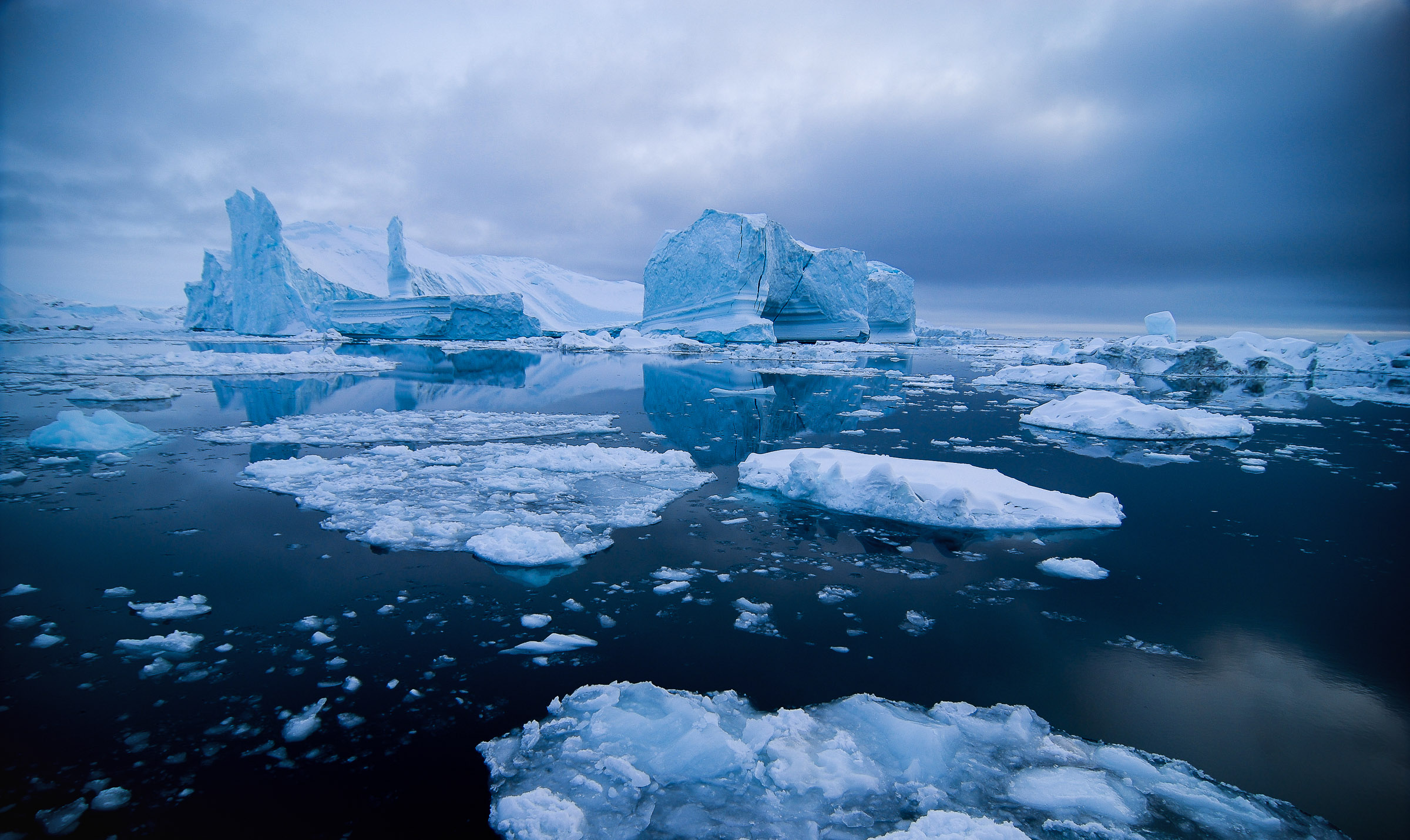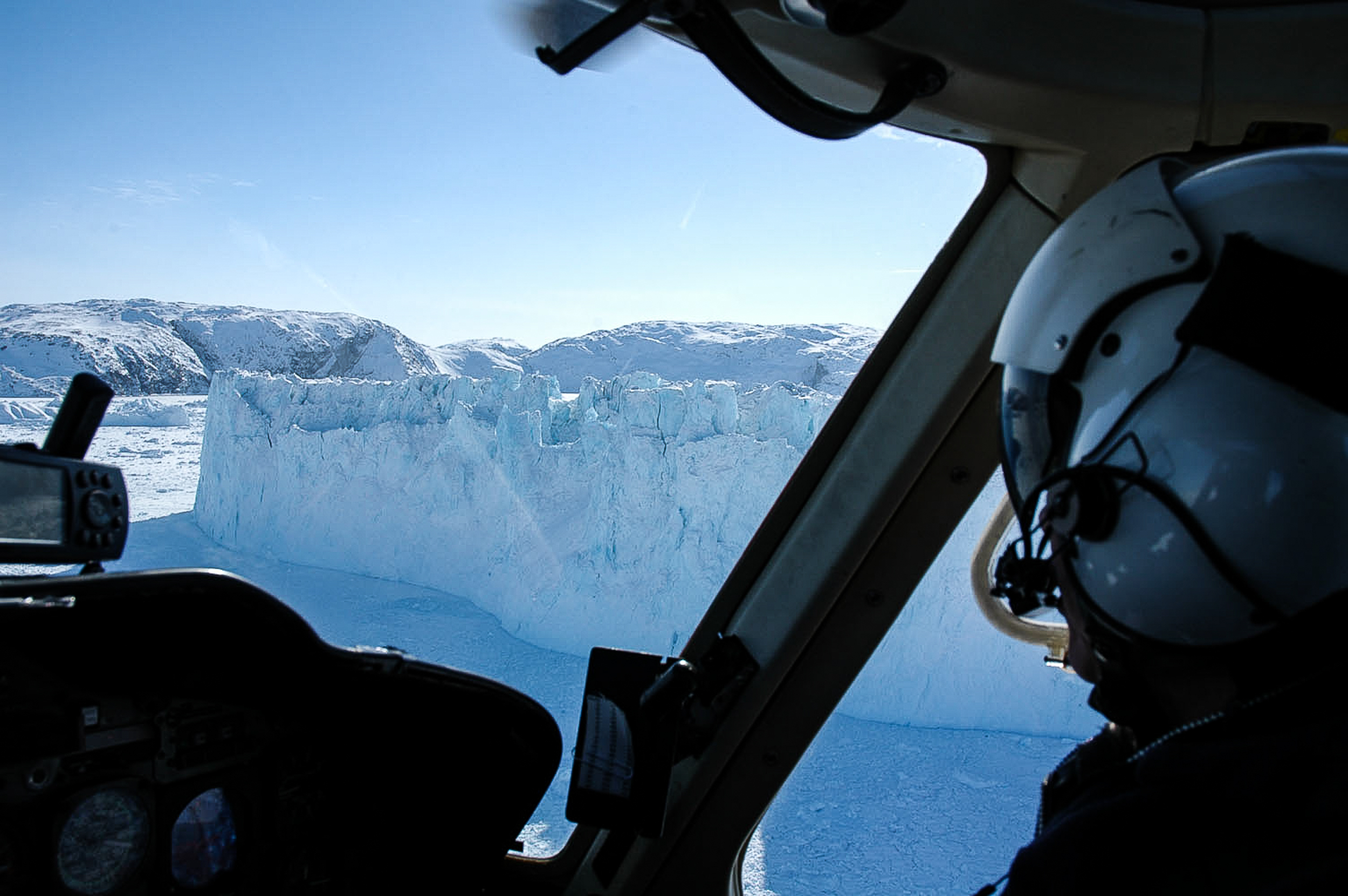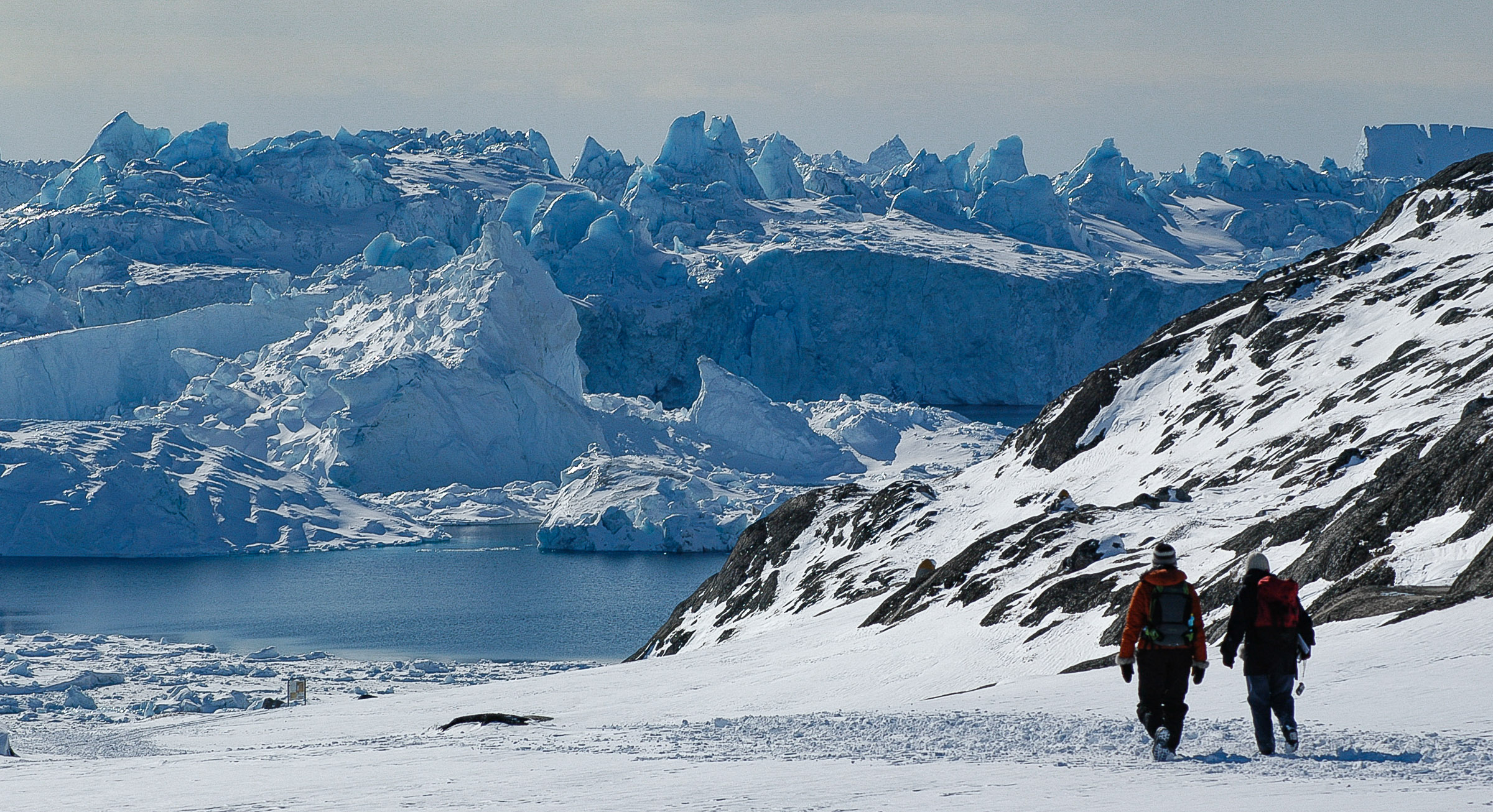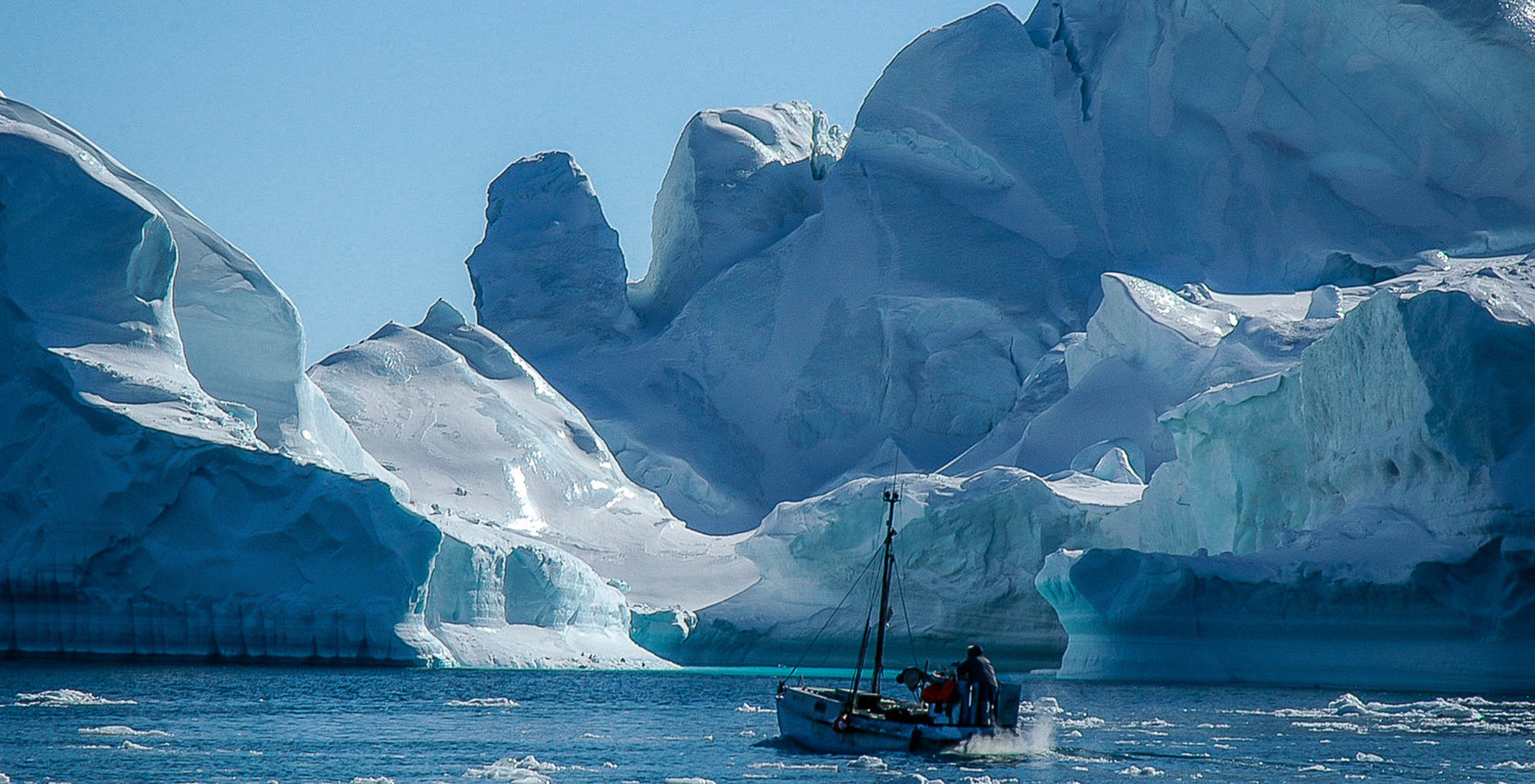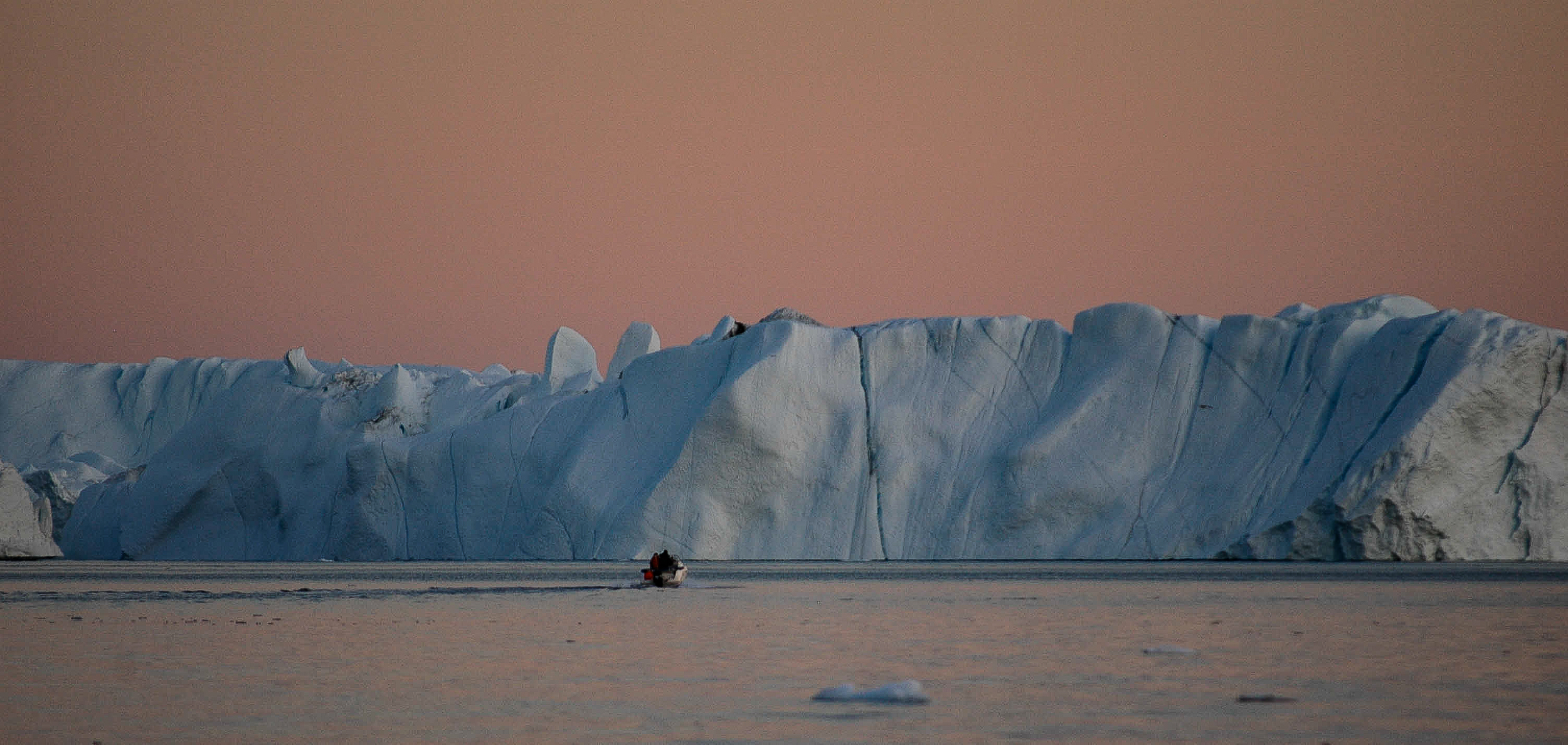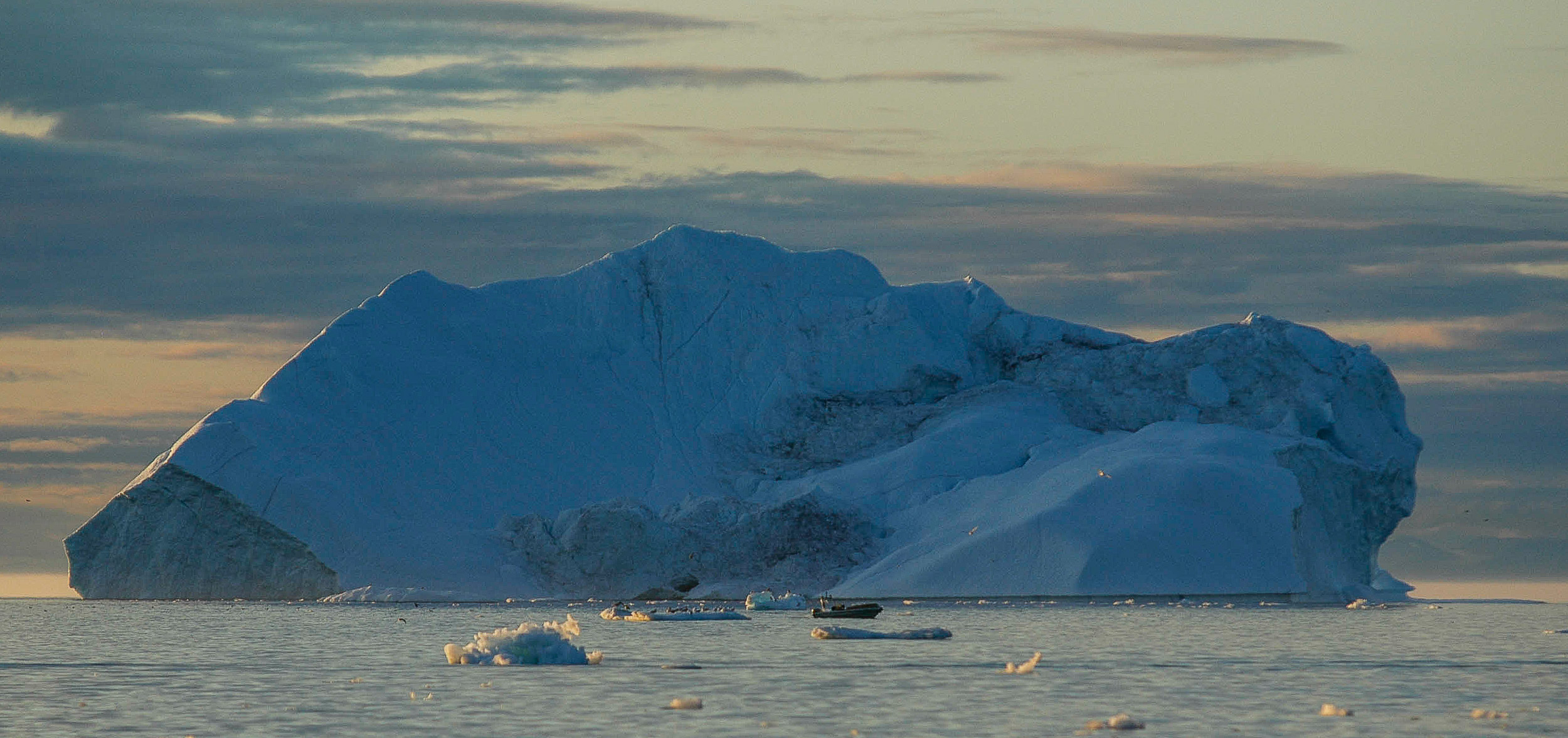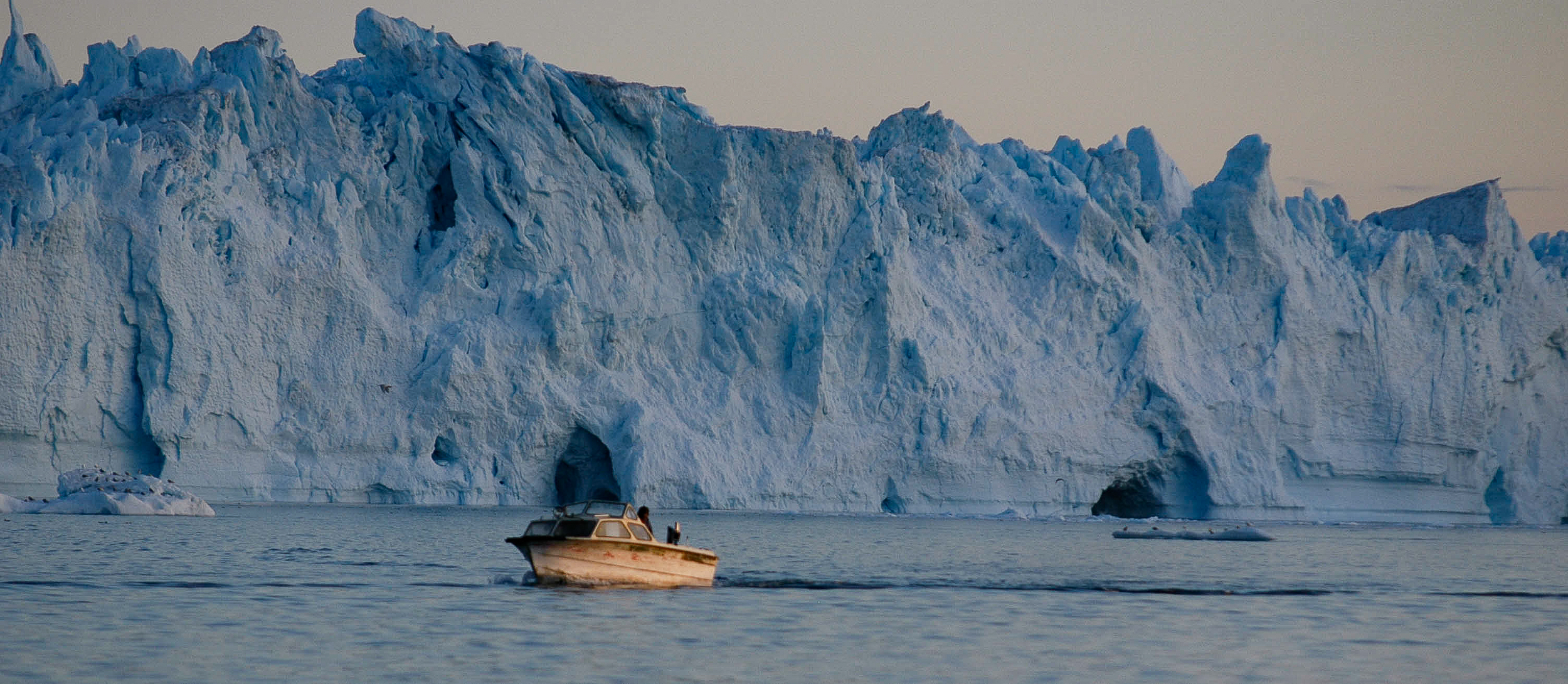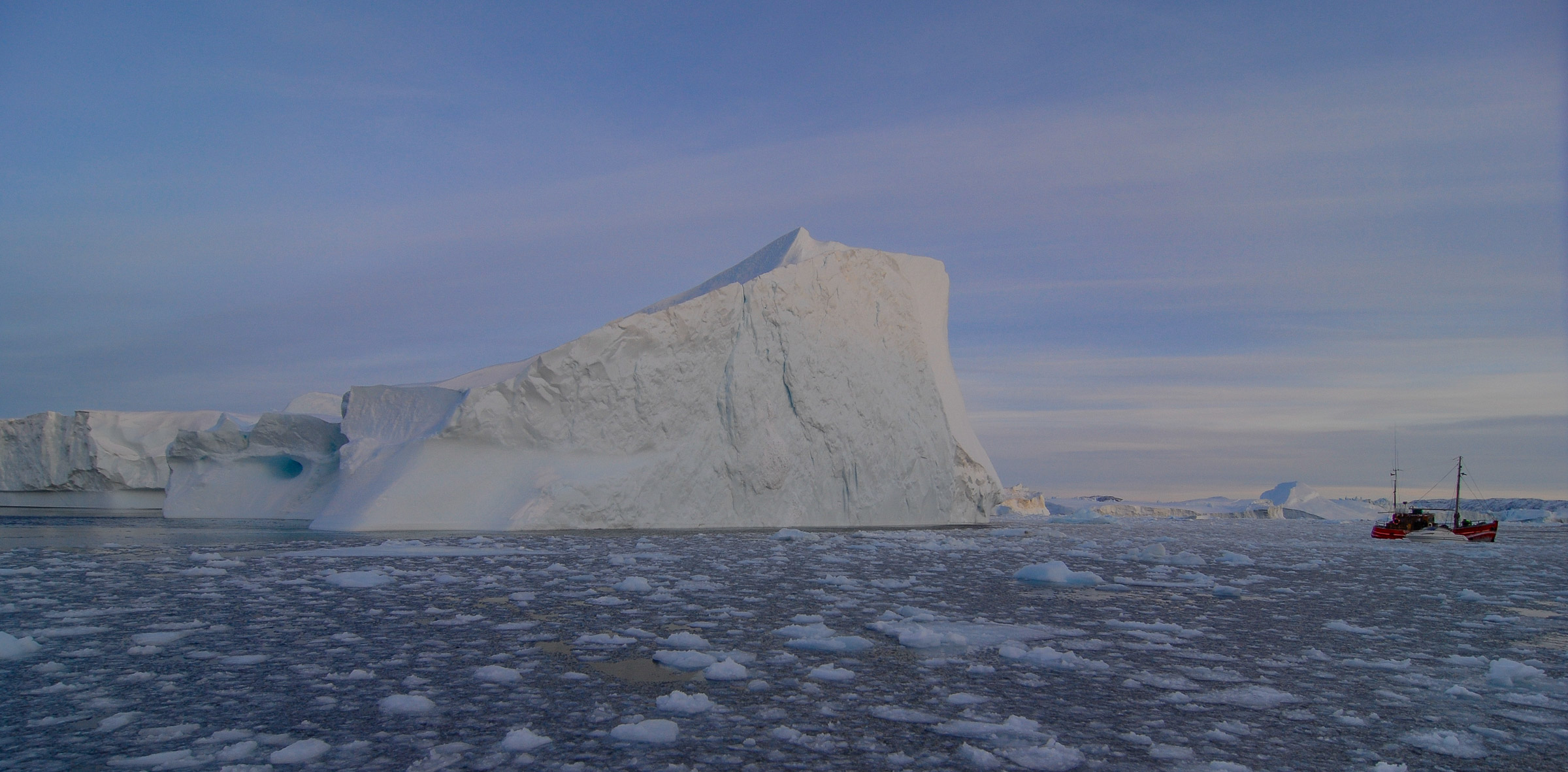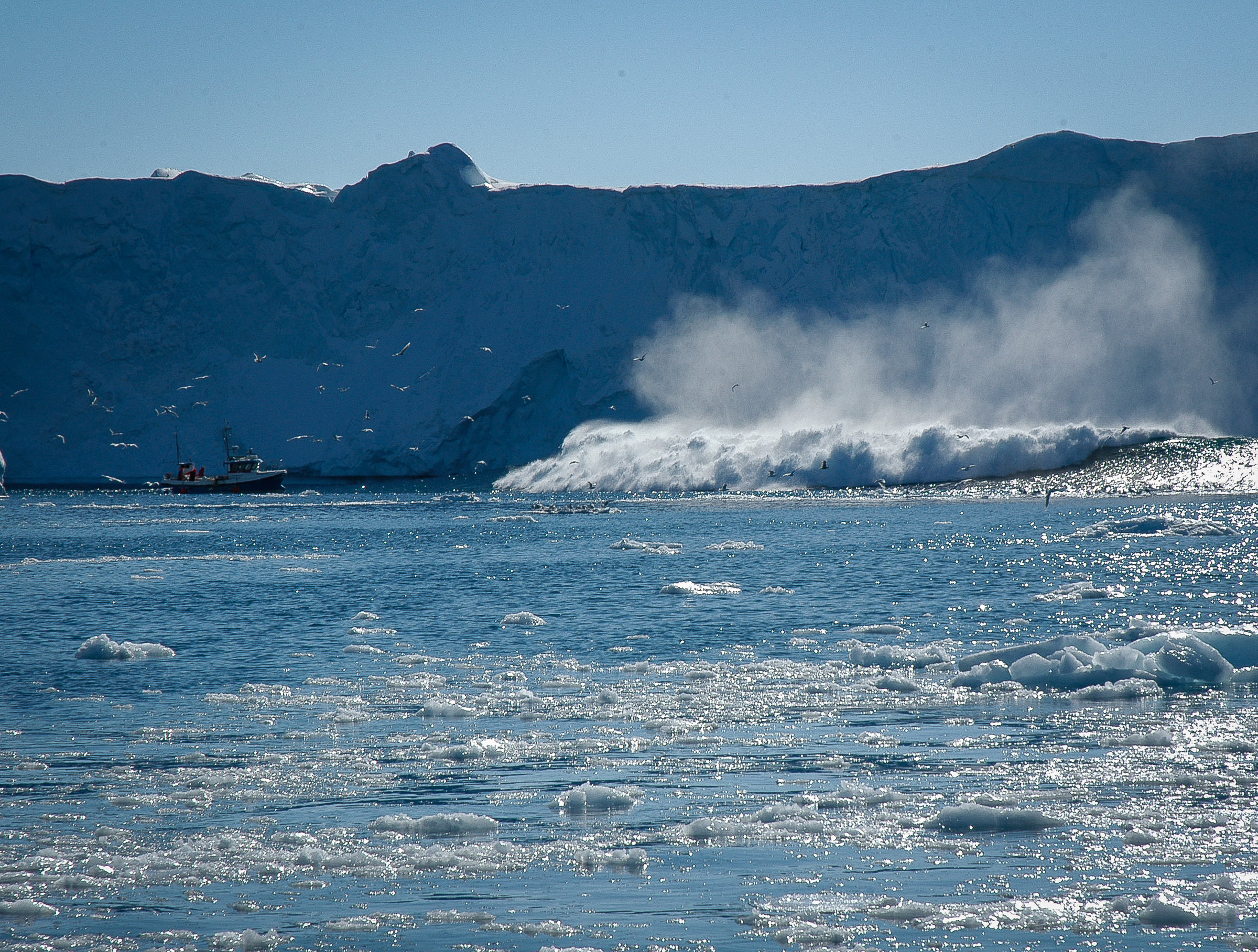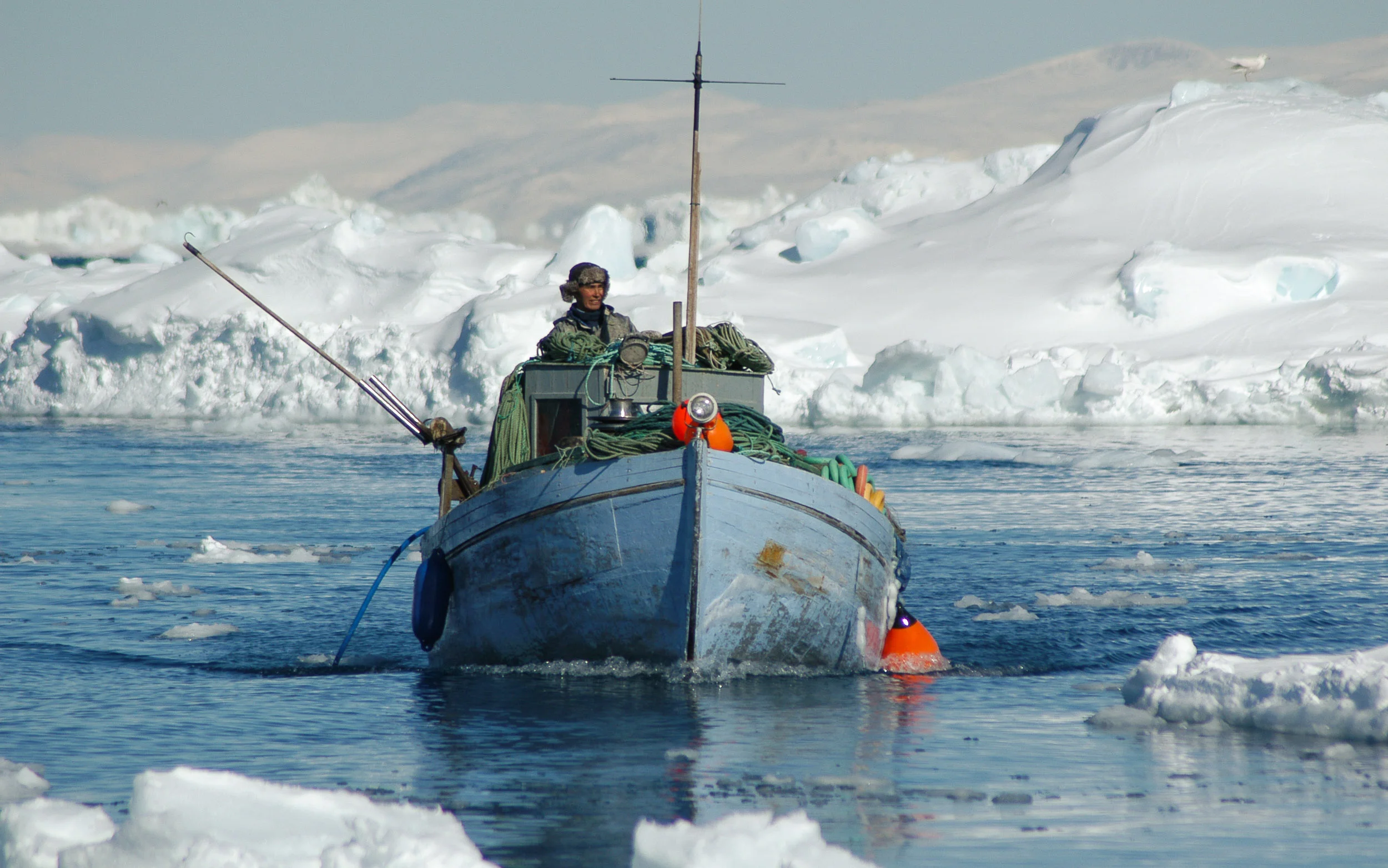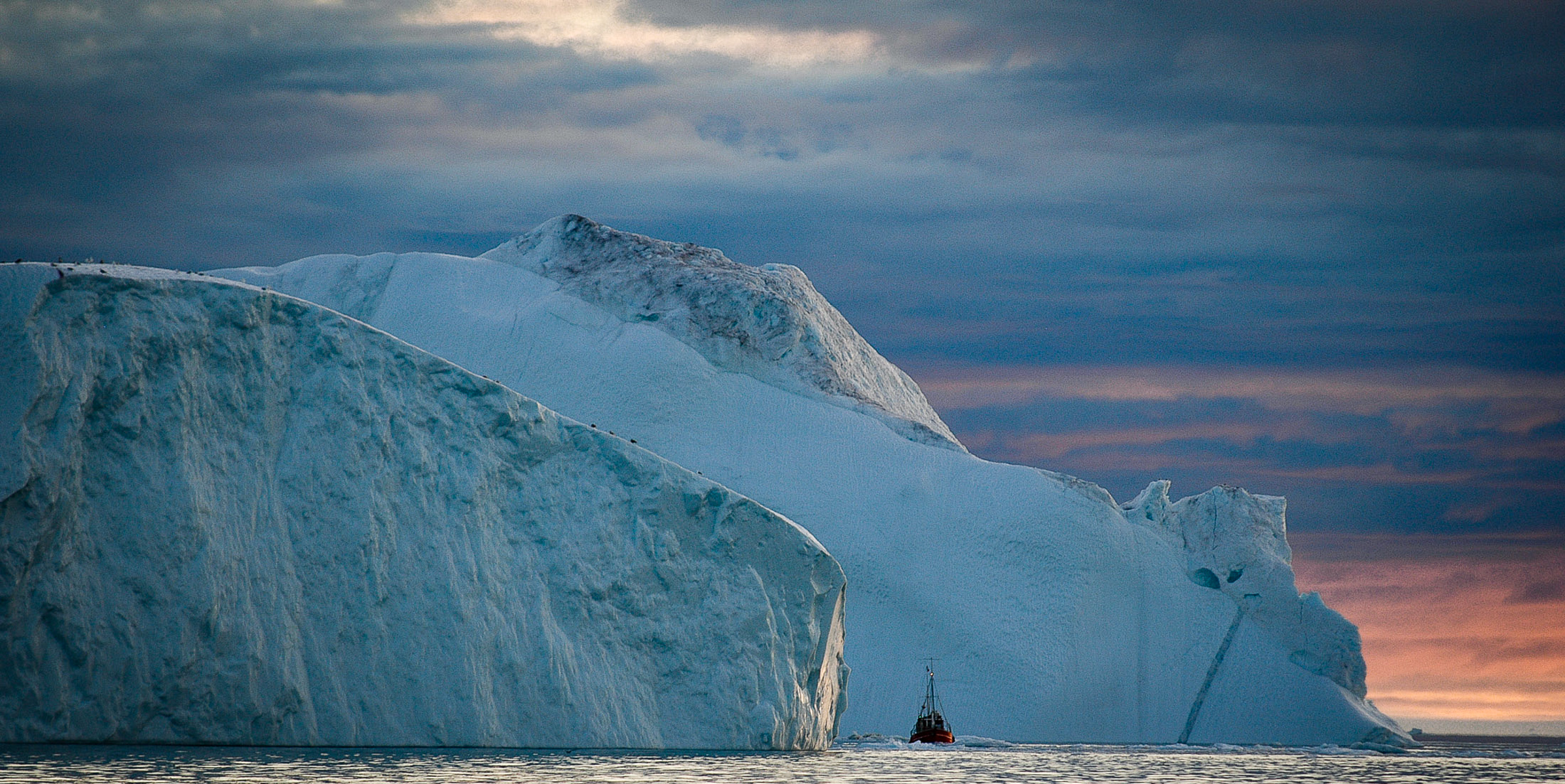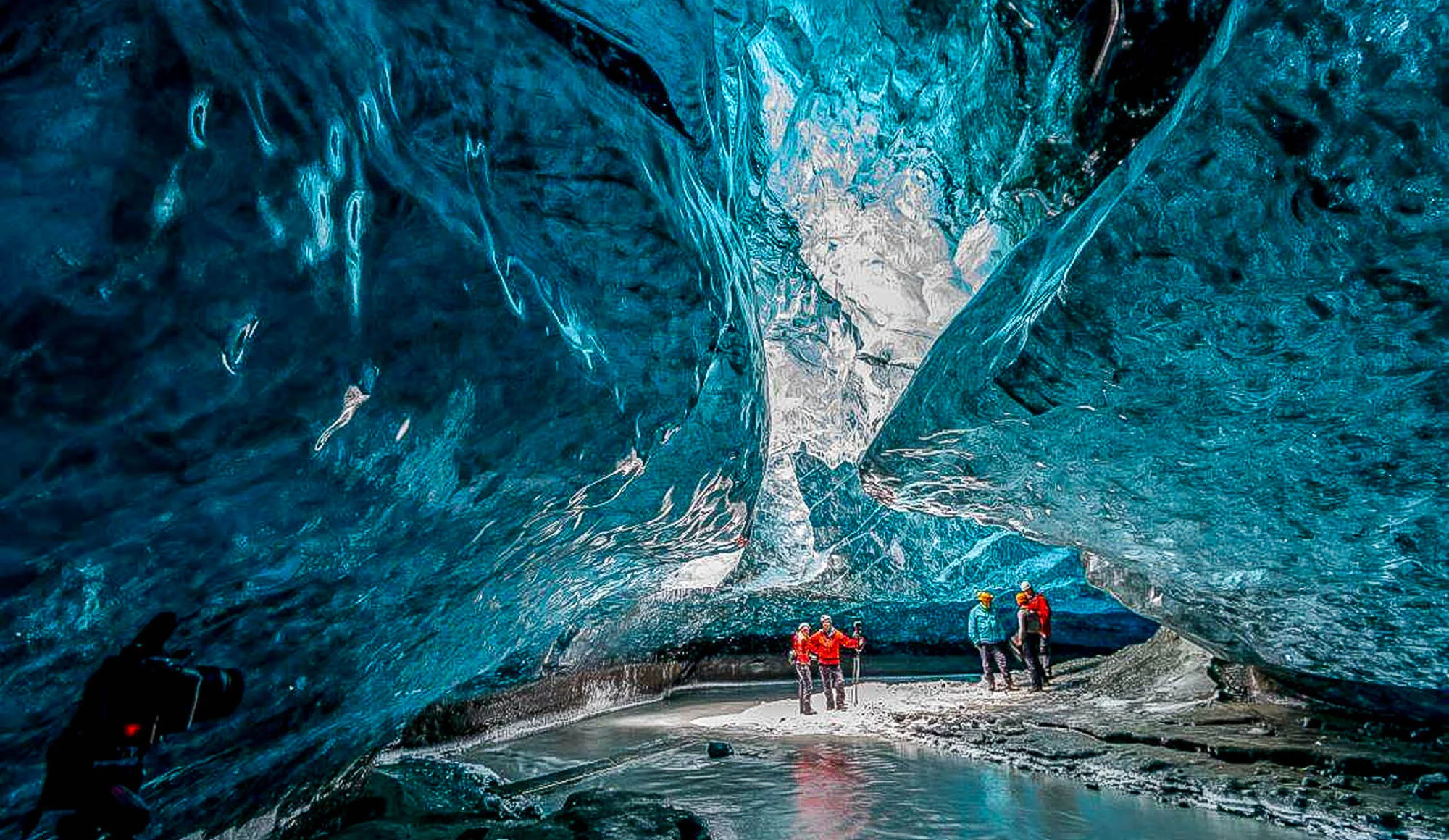In Greenland’s Kingdom of Ice - Ilulissat
ARCTIC TRAVEL / GREENLAND
Photographer: Kristjan Fridriksson
Writers: Kristjan Fridriksson, Vilborg Einarsdottir
May 2019
JONAA’s visual journey to amazing places in the Arctic continues. This time we are way above the Arctic Circle, in Ilulissat, some 250 kilometres above the 66 degrees north, to be exact. In a true kingdom of ice on Greenland’s north-west coast. Ilulissat is a town of some 5000 inhabitants largely living off fishing, hunting and lately, growing tourism. Set on the shores of the Disko Bay, the town sits right beside the Ilulissat Icefjord, which is partly a UNESCO World Heritage site. A true wonder of Arctic nature and the reason for the massive icebergs that have made Ilulissat's name well known. This photographic journey is on the invitation of JONAA photographer and Arctic film locations specialist Kristjan Fridriksson.
Kristjan has been photographing and documenting Greenland, its nature, people, animals and culture for over two decades. Work on film and photography projects has brought him and his cameras to Ilulissat several times and in all seasons during that period.
Amazing, even before you land
“The giant icebergs make Ilulissat a magical place of the far north. No matter if you are there for the first, tenth or twentieth time you are amazed. The only thing I know for sure before I head to Ilulissat is that what I will see and experience will be unique. Every time. Unique formations of ice and unique colours, that I have not seen before and will not see again.
I learned a long time ago that when you think you have seen it all, Arctic nature surprises you. Again and again. There is always something new around the corner.” says Fridriksson. “For me as a photographer that is a big privilege of working in Arctic nature. It is constantly changing and always captivating.”
This article is the first of two photo-stories on Ilulissat. “It is simply too much to cover in one photo-story,” says Fridriksson. “So in this first part we focus on the icebergs and in part two we’ll focus on the Ilulissat Icefjord itself.” He takes over the story from here.
There are different options of experiencing the icebergs of Ilulissat and for me, they are all captivating. Even the last minutes on the inflight which takes you over the iceberg cluster, or the sail through the Disko bay if one travels by the coastal ferry or boat, leave you in awe. Here the icebergs have your attention where ever you are. Even a stroll around town or a simple look out of your window at the Hotel Arctic make the trip worthwhile.
It may take a while to get to Ilulissat, either from Copenhagen through Kangerlussuaq in Greenland or from Iceland, but once there, everything you came to experience and witness is within your reach. The airport is minutes from the town and the icebergs are right in front of you.
To get a closer look at the icebergs there are different options. A boat excursion, a helicopter tour or a simple 30-minute hike on a marked path from the town over some hills on to the mouth of the ice-fjord. All three are all good ways to get closer to the ice and worth doing.
“It may take a while to get to Ilulissat, either from Copenhagen through Kangerlussuaq or from Iceland, but once there, everything you came to experience and witness is within your reach. The airport is minutes from the town and the icebergs are right in front of you”
Icebergs are the dominating element of Ilulissat and simply being in town becomes an “iceberg experience”. JONAA©Kristjan Fridriksson
A towering nature that makes one feel really small
When I first came to Ilulissat I had already been working for a couple of years as a photographer and film location scout in Greenland. I had already fallen in love with this country of Arctic wonders and its native people, nature, culture and the environmental purity it presents. Understandably, for on this largest island of the world, where only a little more than 57 thousand people live, pollution is not filtering the air so on a clear-sky day your vision may be limited only by the horizon. And distances to the horizon in Greenland can be very long.
Apart from the population count, you soon begin to feel that everything in Greenland is “big”. Most certainly the feeling you get in Ilulissat looking at the largest icebergs in the world. It is a towering nature that makes one simply feel really small and somewhat insignificant in the big picture.
Before we get to the photography part, it should be pointed out that to truly appreciate the icebergs of Ilulissat, it is almost compulsory to try and grasp the sheer size and scope of the Arctic nature from which they originate; the Sermeq Kujalleq glacier and the Ilulissat Icefjord.
Sermeq Kujalleq is one of the fastest moving and most active glaciers in the world, calving over 46 cubic kilometres of ice into the Ilulissat Icefjord every year. Needless to say, that number is rising due to the effects of climate change, just like the Ilulissat Icefjord itself is growing due to glacier retreat for the same reasons.
Late last century, the Ilulissat Icefjord was described to me as being up to 6 km in width and 47 km in length. Today I read on the website of Visit Greenland that the length has grown to 55 kilometres and that no less than 66.000 football fields would fit into the Ilulissat Icefjord. So try to put that into perspective. All those football fields and the 46+ cubic kilometres of ice filling them up - and you get the idea of just how colossal this is, by all definitions.
Icebergs in front of the mouth of the Ilulissat icefjord, right beside the town. JONAA©Kristjan Fridriksson
The picture above shows icebergs that have travelled down the Ilulissat Icefjord, emerged through the mouth of the fjord, forming a giant cluster in front of the opening, right beside the town of Ilulissat. Below are pictures from a helicopter trip a few years back. The location is half way up the 55 km long icefjord and looking in either direction you see neither the beginning at the glacier nor the end at the mouth, it just goes on and on.
Grandeur and size that is hard to translate
In the Arctic nature of Ilulissat, it is the enormity of the icebergs that really strikes you. Walls of ice, hundreds of thousands of years old, rising up to 40, 50 metres above sea level are not uncommon. Records show even higher measurements, up to 100 metres above sea level.
With the common definition that 10% of an iceberg is above water and 90% below, here is yet another Ilulissat size and scale factor to get one’s head around. The grandeur and size of the icebergs can be difficult to translate in pictures, one really has to be there to take it all in - but fortunately for a photographer, thousands of seagulls and the occasional fishing boat help the eye to scale the icebergs, even though both birds and especially the boats may be quite some distance away from the icebergs.
Kayaking on an Arctic winter afternoon. JONAA©Kristjan Fridriksson
The magical Arctic light
Any time of year in Ilulissat is a feast for the photographic eye. Even bad weather with low visibility can produce enchanting images. Not to mention those winter moments when Northern lights are dancing in the sky.
My favourite time to photograph in Ilulissat is during the darkest of the dark and the brightest of the bright. In the midst of winter or in the months of late May into early June when there is daylight for most of the 24 hours. This preference of mine is not limited to Ilulissat it goes for Greenland in general, whether it is photographing amongst icebergs, mountains, frozen fjords, glaciers or in the towns.
The middle of winter when daylight is scarce and the sun hardly reaches above the horizon, if it does so at all. Those few hours in between darkness and darkness, when the low arctic sidelight bathes the environment with such magic that one lacks words to describe and images are even hard to believe. These photographs are from late November and early February. JONAA©Kristjan Fridriksson
The clearness and density of colours created by the low rising sun can, at times, feel more like being within an animated film than anywhere in reality. JONAA©Kristjan Fridriksson
The beauty and depth of the Arctic summer night
Next to the middle of winter, comes photographing in the middle of a bright summer's night, preferably when it is raining. Photographing icebergs in such conditions has a surreal beauty and depth to it, as the icebergs deliver an endless range of colours and forms without any conflict of light or shadows from the sun. It all combines into a softness of forms and colours that make photographing the icebergs an endless feast for really all your senses. You feel the icy chill of the air you breathe, you hear the sounds of the silence, the roars from within the ice.
Then, when you click to take a photograph you know that once it is enlargened you will be seeing details that you are missing at the moment, standing in a boat in front of it all. New shades of blue will emerge, forms and shadows that escaped your attention on the shoot. So many small details. It happens just about every time you look through your pictures at a later stage. You see something new, something you missed.
Photographed past midnight on a bright summer night in Ilulissat. If you look closely, there are two boats in this picture to give an idea of the size of the iceberg. JONAA©Kristjan Fridriksson
“Photographing during a bright summer’s night, preferably when it is raining, has a surreal beauty and depth to it. The icebergs deliver such softness with an endless range of blue tones and forms without any conflict of light or shadows from the sun”
Shapes, forms and shades of blue that exceed vivid imagination
Much could be written about the formation of the icebergs, but words simply cannot capture the might of pictures. The icebergs are of all shapes and looking to your left or your right from a boat can show very different visions. Visions that exceed any vivid imagination. There are the cathedrals and domes of ice, the softly shaped hills and plateaus and the ones that look more like massive rubbles or the topping of a fluffed cake. The ones that are soft and melting and the ones showing such density within the ice that it feels like a rock that will stay in place forever.
Of course they will not stay forever but eventually, float off. But some of the icebergs are so enormous that they stay stranded for a long time, even years, while others make a short stop before floating off and melting into the North Atlantic Ocean. That does not happen quickly though and icebergs from Ilulissat have been known to float further south than the United Kingdom before totally merging into the ocean.
Caution, safety and keeping a distance are the keywords here
The giants of Ilulissat, with only the 10% above sea level, sit stranded on shallows once they emerge through the mouth of the Ilulissat Icefjord. These shallows are said to be at around 400 metres depth and although icebergs may strand on them, that does not guarantee that they will stay still and in place. They may even be gone a day after you saw them.
Safety around the icebergs is of paramount importance and that is a rule respected by all those who work around the Ilulissat icebergs. Because an iceberg may turn around itself, collide with other icebergs or move for some other reasons.
Caution is needed when sailing within the iceberg cluster - for obvious reasons. JONAA©Kristjan Fridriksson
The fishermen in Ilulissat are well aware of this, as are those sailing tourists on sightseeing excursions. But of course, when you are there as a working photographer, at times you want to get as close as possible. Which explains why I have sailed on most of my Ilulissat projects with the same hugely experienced local captains who have something of a sixth sense about the icebergs and seemingly an iceberg safety gene in their blood.
A part of that is carefully studying an iceberg you want to get close to, look at the part that is above water and read information out of its shape, size, sea-level markings, cracks, water-streams emerging etc., how likely it is to roll over or for a part of it to break off which can be followed by a large wave or a small tsunami. An example of unpredictable situations that can come up and I have witnessed in Ilulissat, is when underwater pieces of an iceberg break off and float up to the surface with great force. You do not want to be on a boat above when that happens.
On projects, I have surely sailed very close to icebergs with these captains, but never before closely examining the icebergs, their shape, how they move, the colours and movement visible below water and the air bubbles that may be coming from a part of the iceberg that is below waters. One also needs to listen to the sounds from the ice because those sounds can contain both information and warnings if something is about to happen.
One time in Ilulissat sailing around icebergs, the captain sensed some underwater movement although the surface in front looked very calm. So we turned off the motor to listen for such sounds. Instead of the normal and somewhat expected silence, what we heard is best described by what you would likely hear in a tank of massive soda foaming and bubbling. That sound saved us in good time to get away and eventually watch from a safe distance as a huge swell emerged on the ocean surface and chunks of ice, the biggest being something close to the size of a bus, being whirled down.
The view from on top of an iceberg. Photographed during safety preparations for an Ilulissat production. JONAA©Kristjan Fridriksson
On other occasions, work has brought me and my safety team both on top of icebergs and onto the ice that forms in-between them. But that is a totally different thing to sightseeing and one that visitors should simply never attempt. Consequences of being careless and irresponsible in the Arctic environment of Ilulissat can be big - just like everything else in that environment. Take it from one who has the experience of falling into Arctic waters - you do not want to go there. The rule for visitors to respect is that you do not go too close to the icebergs and you do not step out on the ice or onto an iceberg or ice-floe. Arctic nature is not a very forgiving one and that you learn quickly from the local people who know it best.
So all this is to say that the icebergs of Ilulissat, like all other icebergs and all Arctic nature, needs to be visited with the precautions, safety measures and awareness that in all cases it is so much larger than any visitor. Keep that in mind and a trip to the icebergs of Ilulissat or Greenland, in general, may well be your trip of a lifetime. ▢
The iceberg cluster is not only a world of wealth for the visiting eye, but it is also the workplace of several local fishermen, bringing ashore the freshest halibut one can get. JONAA©Kristjan Fridriksson
Kristjan Fridriksson is an Icelandic photographer, graphic designer and visual artist, who for over two decades has specialised in Greenland as a film and photography location expert, working with his safety team of two Inuit hunters on extreme and remote locations. During this time he has also spent months each year and in all seasons, documenting life and culture, especially on Greenland’s East coast and built up an extensive photography archive from Greenland. His visual documentation also covers Iceland, the Faroe Islands, the USA, Russia, Norway and South America. Kristjan has published photography books on Denmark and Greenland, e.g. the acclaimed "Ammassalik - A Jewel in the Arctic Crown" published in 1997. He has since 2012 worked on his next Greenland book titled “Thomasine’s World” which is set for publication in 2021. Kristjan is a founding member of the JONAA photojournalistic team.
Although the grandeur of the great big icebergs is what captures your attention, beauty is found no less on a tiny ice-floe. JONAA©Kristjan Fridriksson


